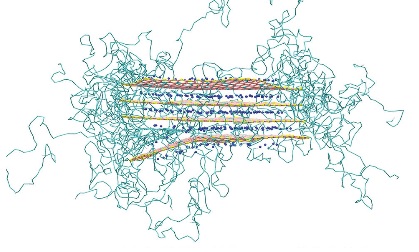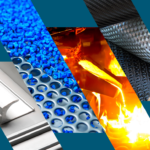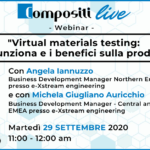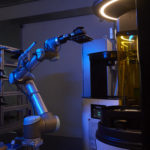Laboratorio virtuale per progettare materiali compositi
UCL scientists have shown how advanced computer simulations can be used to design new composite materials. Nanocomposites, which are widely used in industry, are revolutionary materials in which microscopic particles are dispersed through plastics. But their development until now has been largely by trial and error.
The ‘virtual lab’, developed using supercomputer simulations by UCL’s James Suter, Deren Groen and Peter Coveney greatly improves our understanding of how composite materials are built on a molecular level. They allow the properties of a new material to be predicted based simply on its structure and the way it is manufactured – a holy grail of materials science.
“Developing composite materials has been a bit of a trial-and-error process until now,” says James Suter (UCL Chemistry), the first author of the study. “It typically involves grinding and mixing the ingredients and hoping for the best. Of course we test the properties of the resulting materials, but our understanding of how they are structured and why they have the properties they have, is quite limited. Our work means we can now predict how a new nanocomposite will perform, based only on their chemical composition and processing conditions.”
The team, based in UCL’s Centre for Computational Science, looked at a specific type of composite material, where particles of the clay called montmorillonite are mixed with a synthetic polymer. It is impossible to study these with microscopes – the processes are smaller than the wavelength of light, and therefore impossible to observe directly. Moreover, the structure of the clay particles does not lend itself to observation, even through less direct methods. The clay particles resemble stacked packs of playing cards, made up of tightly packed sheets (the cards) that may separate out and sometimes cleave off entirely as the long chain-like polymer molecules slide between them. This means much of the interaction between the polymer and the clay is hidden from view.
“Our study developed computer simulations that describe precisely how the layered particles and the polymer chains interact,” says co-author Dr Derek Groen (UCL Chemistry). “The challenge is getting enough precision without the computer simulation being unmanageable. Certain processes need a highly detailed simulation which describes everything on a quantum level – but if we simulated the entire sample at that level, we’d literally need several decades of supercomputer time.”
The team showed that certain interactions, such as when the edge of a sheet of clay comes into contact with a polymer chain, require a quantum simulation; some require only an atomic-level simulation (where each atom in a molecule is represented as a ball on a spring); while others can have an even lower level of fidelity, bundling atoms together to give the approximate shape and properties of a molecule. These multiple ways of representing the same system constitute a multiscale approach to modelling materials, where the most appropriate level of detail can be adopted for different parts of the simulation.
“When you make approximations like this, it’s important to test that they are accurate,” says Suter. “A lot of our work involved comparing the different types of simulation and ensuring that they gave results that were consistent with each other. The quantum mechanical model starts from first principles and is derived from the most basic laws of physics, so we know it’s right. But there are quite a few assumptions involved in a molecular model, and we had to ensure those assumptions were correct.”
The resulting simulations show for the first time exactly how the polymers and clay particles interact. The long, chain-like polymer molecules (which typically come in a tangled bundle) unwind themselves, slip between the sheets of the clay particles, and with certain types of polymer, gently coax them apart. On longer length and timescales, which the multiscale simulations permitted the team to study, they were able to see the aggregation of the polymer-entangled clay sheets into organised arrays of stacks, with very different properties. These predictions are already being used to see how to improve construction of composite materials.
The simulations required extensive and closely coordinated use of multiple high-performance computing facilities, including ARCHER (a UK supercomputer in Edinburgh) and STFC’s BlueJoule and BlueWonder (supercomputing facilities at the Daresbury Laboratory). The massive computing power and choreography required to carry out this type of simulation means it would have been impossible a decade ago, and very difficult even five years ago.
Source: http://goo.gl/8ek3Ai
Didascalia foto: The ARCHER supercomputer one of several used in this study













